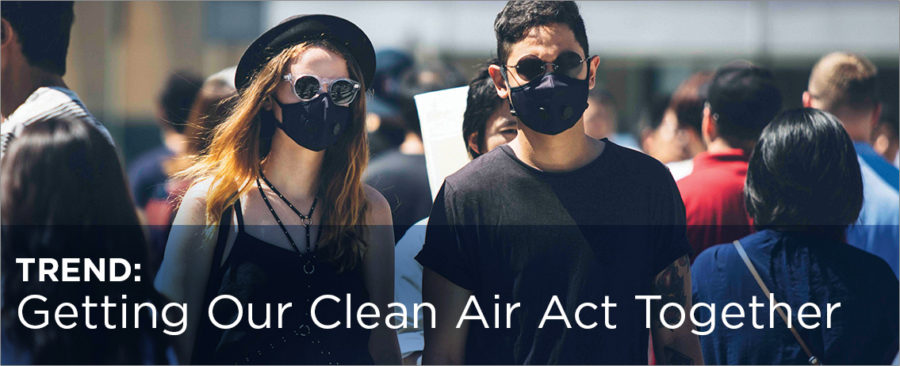TREND: Getting our “Clean Air Act” Together

The toxins in the air that we breathe (both indoors and out) have become a catastrophic invisible killer, responsible for the premature deaths of 6.5 million people worldwide. Over 90% of the world’s population now breathe air that violates air quality guidelines: Countries like China and India are smothered in toxic air, while the (energy efficient) airtight buildings in developed nations can prove just as deadly. As the gravity of this issue becomes clearer – and disagreements over standards get left on the table by governments – we will see individuals owning their own “clean air acts.”
This can mean filling our homes and offices with pollution eating plants, donning chic air pollution masks, actively monitoring indoor air quality using new sensors and apps, investing in devices that purify the air around us, adopting the storm of new pollution-fighting beauty regimes (pollution is the new UV), embracing more salt therapy and breath-work training, or choosing “lung-cleansing” travel destinations. Significantly, this trend will put more pressure on businesses and governments to take action against the ultra-fine particulates that are dirtying our air.
Forecasting The Future
Concerns about air pollution will have a far-reaching impact on wellness and lifestyle decisions in the future. We predict boycotts of companies and industries that contribute to the problem and increased support for those that work to solve it. A clear winner will be spa and wellness destinations, and new wellness real estate that promote themselves as havens from air pollution, while travel to “pollution-free” zones will increase.
This is an excerpt from the TRENDIUM, a bi-weekly communication exploring the wellness trends identified in the 2018 Global Wellness Trends Report.
Subscribe to the TRENDIUM. | View TRENDIUM Full Issue.